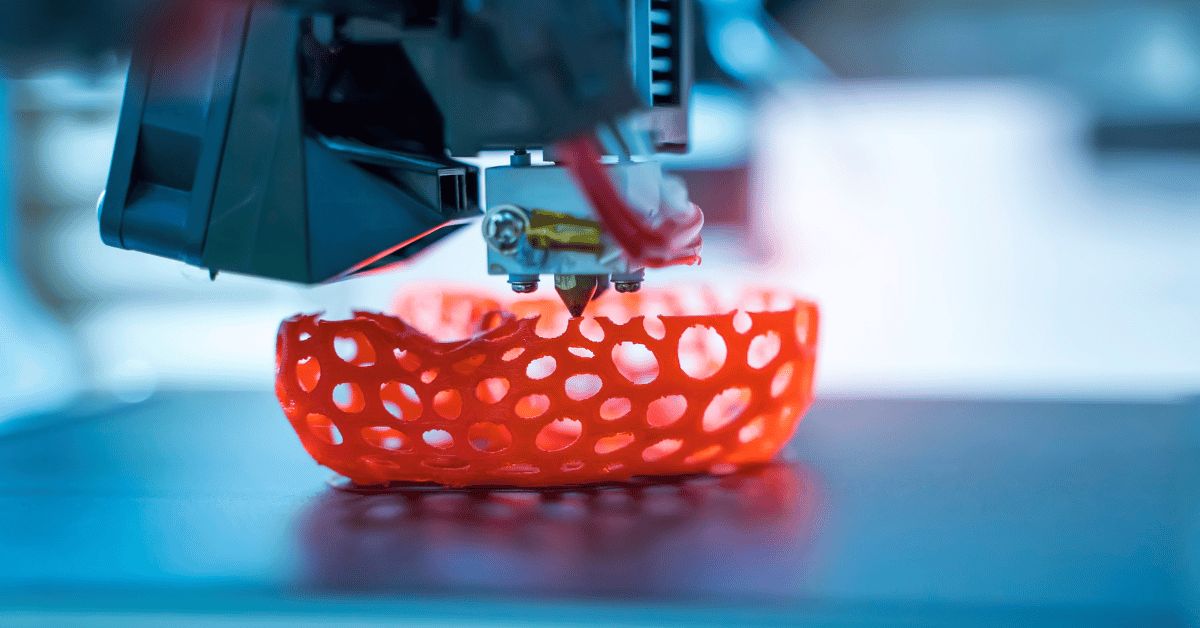Advanced technologies, which are written about in reputable scientific journals and books about scientific discoveries, find application in everyday life - immediately or decades later. We talk about the achievements of science in the 21st century, which until recently seemed like science fiction.
1. 3D printing technologies
The first 3D printers appeared back in the 1980s, but only in the 21st century did they become widely used. Devices have become cheaper, and not only plastic, but also metals, concrete, food and even living cells are now used as consumables for them.
The largest 3D printed building is the Dubai Municipality (UAE) with an area of 641 square meters. m. The two-story futuristic building, 9.5 m high, is made of gypsum-based material. And in Amsterdam, a 12-meter stainless steel pedestrian bridge was built using 3D printers.
Israeli scientists used a 3D printer to print an artificial heart. The experimental organ, about the size of a cherry, consisted of a hydrogel based on living cells that formed chambers and blood vessels. And the French company Poietis has created artificial skin with a four-dimensional structure that will help patients after burns and serious injuries, and has developed technologies for printing other tissues of the human body.
3D printing also has a place in everyday life. For example, you can order a regular 3D printer to create plastic figures and parts, or go further and buy a device for printing food: from pizza to desserts and decor for gourmet dishes. From a global perspective, 3D food printing should reduce the amount of food waste on the planet and make even dietary dishes very appetizing.
2. Augmented reality
It is often confused with virtual reality, but these are completely different technologies. Virtual reality is a completely digital world that you can see through special glasses or a helmet with screens for each eye. With the help of augmented reality technology, digital objects are added to the picture of the real world we are familiar with.
The roots of augmented reality lie in the 20th century, but only a few years ago computing power made it possible to implement the technology almost everywhere - from schools and kindergartens to assembly lines in automobile factories. And for this you don’t need complex expensive devices - just a regular smartphone.
It works quite simply. The camera of a smartphone or other gadget films everything around, and a gyroscope or accelerometer monitors changes in the device’s position in space. Then the necessary objects are superimposed on the camera image - hints, inscriptions or funny virtual characters. They move along with the image from the camera, and when you look at the screen, you see two realities at once - our objective and digital.
Augmented reality makes it easier to learn new languages: for example, a smartphone can recognize objects around and label them. Technology helps surgeons perform operations, and engineers help assemble complex devices, providing hints during the process. Drivers can use navigation in augmented reality, when a route map is displayed on top of the road, designers can show clients the new interior of an apartment before renovation. And in a restaurant, even before the dish is served, the visitor can examine it from all sides directly on his plate, which is still physically empty.
3. Totally artificial heart
Working prototypes of human organs have existed for a long time, but most often these were complex stationary systems that were unlikely to be used outside the hospital. In 2021, scientists and doctors were able to develop and implant a completely artificial heart for the first time.
A team of surgeons at Duke University Hospital, led by Jacob Schroeder and Carmelo Milano, performed a successful organ replacement on 39-year-old Matthew Moore, who suffered from heart failure. With the implant, he will be able to lead an almost normal life - live surrounded by his family, raise his two-year-old son, go to the store and work, and travel.
The only inconvenience is that the artificial heart is powered by an external battery, which lasts for about 4 hours. The controller for controlling the device is also located outside the human body. Therefore, the patient will have to carry a bag weighing about 4 kilograms and regularly connect to a computer in the hospital to monitor the status of the device.
4. Reusable rockets
SpaceX has developed rockets that can be recovered and reused. This effective and cheap alternative to disposable rockets can reduce the cost of delivering cargo into orbit.
The first re-launch of the rocket took place on March 30, 2017. SpaceX sent into space the Falcon 9, a model with nine Merlin liquid engines that run on RP-1 kerosene and liquid oxygen. Falcon Heavy was later launched with three modified Falcon 9 first stages: one used as the central stage, two as side boosters.
Not the entire rocket can be called reusable, but only its first of two stages. It is equipped with systems for return and vertical landing on a landing pad or a platform floating in the ocean. The stage can withstand up to ten starts.
Later, Blue Origin, founded by Amazon CEO Jeff Bezos, launched its reusable single-stage rocket, New Shepard. It runs on hydrogen and oxygen and is designed for suborbital flights. New Shepard is suitable for space tourism, but, unlike Falcon, will not be able to launch artificial Earth satellites into orbit.
5. High density batteries
New off-grid devices require a lot of power to survive without a power outlet for as long as possible. At the same time, batteries must be compact and safe - for example, they must not explode if exposed to extreme heat or mechanical damage.
A team at the Battery and Energy Storage Technology Center (BEST) in Pennsylvania has created a safe and powerful lithium-ion battery that will allow an electric vehicle to travel up to 1.6 million kilometers. During tests, nails were literally driven into it to cause a short circuit. But the temperature of the damaged cell increased by only 100 degrees Celsius - and in a conventional battery the difference would be 1,000 degrees Celsius.
Samsung researchers also made a breakthrough: they developed a solid-state lithium metal battery with a density of 900 Wh/L. It is 50% more compact than existing batteries and is created without the use of liquid electrolyte. Over time, the battery does not degrade - the amount of charge it can accumulate remains the same.
6. Bionic hand
In the 21st century, bionic prostheses can almost completely replace natural limbs. Scientists have provided not only the ability to move them as if they were their own hands, but even restored the ability to feel - sensation impulses are transmitted directly to the brain.
Researchers at Johns Hopkins University in the US have created the MPL (Modular Prosthetic Limb), which can perform almost all the movements of which the human arm is capable. It contains more than 100 sensors, as well as special motors that provide the usual strength and dexterity.
The prosthesis is equipped with tactile sensors and allows you to determine the location, temperature and texture of objects. And the neural interface provides intuitive and natural control of the artificial hand - just think about the action to perform it.
7. Graphene
The existence of the first known truly two-dimensional crystal (with a crystal lattice one atom thick) was first confirmed experimentally in 2004 by scientists Andre Geim and Konstantin Novoselov, and in 2010 they received the Nobel Prize in Physics.
Essentially, graphene is a film of graphite (crystallized carbon) one atom thick. They couldn’t get it for a long time due to instability. Geim and Novoselov used an oxidized silicon substrate to stabilize the two-dimensional film.
Graphene is very strong and at the same time extremely flexible. It conducts current, and the electrons in it move faster than in all known materials. In particular, it is 100 times faster than the silicon from which modern processors are made.
Using graphene, it is possible to create ultra-thin filters, touch displays, sensors, highly efficient catalytic cells, nanochannels for working with DNA, and components for high-precision electronics. Graphene chips will increase computer performance and speed up data transfer, making devices more powerful and compact.
8. Self-driving cars
Advances in artificial intelligence, greater computing power, high-speed wireless data transmission and precise sensors have all served as the basis for the creation of cars that can operate without a driver. They scan the road situation in real time, recognize pedestrians and road signs and can make split-second decisions in difficult situations.
In 2021, a Tesla Model 3 with an FSD (Full Self-Driving) system drove independently from San Francisco to Los Angeles and back—that’s about 2,400 km. The car successfully coped with the task even on busy city streets and made two stops to charge the battery.
But autopilot is being developed not only for personal cars. For example, in the USA, the startup Waymo launched a self-driving taxi service in 2020. There are few cars, but trips are available to everyone.
Another application of unmanned vehicles is cargo transportation. The NVIDIA Drive platform is already helping truckers on the road, and will soon be able to replace them on standard routes. Tesla and other companies are also working in this direction.
9. Gene editing
In 2012, Jennifer Doudna from the United States and Emmanuelle Charpentier from France developed a molecular tool called CRISPR-Cas9, which is called “genetic scissors.” For this scientific breakthrough, they received the Nobel Prize in Chemistry in 2020.
CRISPR‑Cas9 allows gene editing in plants and animals. This opens up new possibilities for selection and can stop the spread of diseases - for example, if you change the genes of mosquitoes, they will not be able to carry malaria and Lyme disease.
CRISPR‑Cas9 has already contributed to the treatment of cancer. Research is being conducted that in the future can eliminate hereditary diseases and genetic mutations.
But it is wrong to believe that CRISPR‑Cas9 will pave the way for GMOs. Firstly, genetically modified organisms were first developed back in 1972. CRISPR‑Cas9 can only improve the accuracy of DNA changes and eliminate negative side effects.
By the way, the map of the human genome is also an achievement of the 21st century. The bulk of the work on the Human Genome Project was completed in 2003.
10. Humanoid robots
The Atlas robot from Boston Dynamics is a favorite of the Internet: it can do somersaults, stay on its feet after strong blows, can overcome obstacles and even dance. The developers call it a research platform designed to push the boundaries of full-body mobility and the most dynamic humanoid robot yet.
In fact, Atlas and other Boston Dynamics models—such as the robotic dog Spot and the robotic loader Stretch—have deep practical meaning. They are capable of replacing people in difficult or dangerous conditions: searching for victims under the rubble of buildings or in fires, exploring remote areas, delivering cargo and performing boring routine operations around the clock.
Humanoid robots have other applications. For example, model consultants, companions and waiters, and assistants for people with disabilities are being developed.

